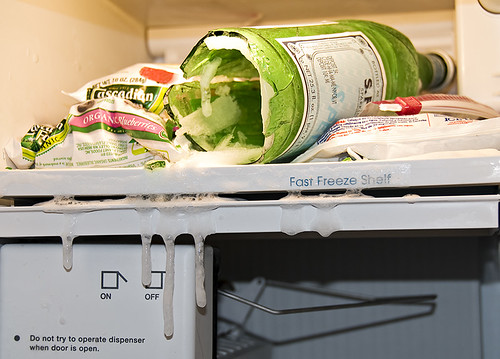
That's it, I'm sticking with beer, wine and Jameson's from now on.....
Alina Tugend writes:The type of plastic bottle that typically holds water, soda and juice is made from polyethylene terephthalate, a petroleum-based material also known as PET that is labeled No. 1.
The trouble with reusing those plastic bottles is that each time they are washed and refilled they become a little more scratched and crinkly, which can lead them to degrade. That can cause a trace metal called antimony to leach out, said Frederick S. vom Saal, a professor of biology at the University of Missouri who has studied plastics for years.
[snip]But perhaps a better alternative — in terms of health and the environment — is to use the hard plastic bottles made with polycarbonate plastic, often known by the brand Nalgene. It has the numeral 7 stamped at the bottom and is the same type of material used to make some baby bottles, the lining of tin cans and other products. I have some of those around the house. They are just too big to fit into our car cup holders so I retired them to the basement.
Time to dig them out?
Not quite. Environmental groups and some scientists have raised concern that such plastic can leach bisphenol A, an endocrine-disrupting chemical.
[Click to read more of The (Possible) Perils of Being Thirsty While Being Green - New York Times]
Which plastic bottle to use then? Can't always count on having the

Sigg bottle (in airports and during other impromptu needs for water)
“If I was to use plastic, I would stay with No. 2 and No. 5,” Professor vom Saal said. No. 2 is high-density polyethylene; No. 5 is polypropylene. Both are used in margarine tubs and yogurt containers for example.
But, he warned, do not heat anything in any type of plastic in the microwave.
If you do use these hard No. 7 plastic bottles, the Green Guide, published by the National Geographic Society, advises you to avoid washing them in a dishwasher or with harsh detergent to limit wear and tear.
